
views
Caring for Your Hair

Avoid chemical based shampoo, conditioner and styling products. Most hair products contain chemicals that are effective at cleaning your hair but may cause damage. Some people aren't affected by these chemicals, but if you're worried about thinning hair, it's best to avoid them. Sodium laurel and laureth sulfates are cleaning agents found in most shampoos. They strip the hair of natural oils, which can cause further damage to hair that has already been dyed or chemically treated. That said, there's not enough research to prove that sulfate-free shampoos are gentler or safer. While results may vary by hair type and quality, as a general rule, choose organic products or products made with natural oils and soap agents for the lowest risk to your hair.
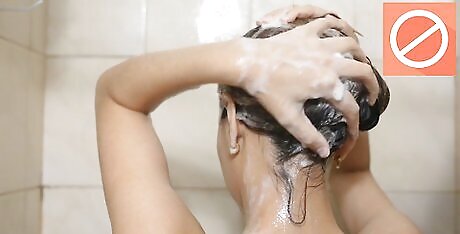
Don't wash your hair every day. Our scalps produce natural oils that coat the hair and protect it from outside damage. When these oils are washed away every day, the hair becomes weaker over time. Everyone's body is different, but most people should be able to comfortably wash their hair two to three times a week without it getting too oily. If your hair is naturally quite oily, you might want to wash it three to four times a week instead. Washing too infrequently can also be harmful. People with thinning hair often find themselves more susceptible to dandruff and scalp conditions which can be avoided by regular (though not daily) washing. Use a "dry shampoo" to treat your hair in between washes. It keeps it looking fresh and has the added benefit of making hair look thicker. Dry shampoo is a powder you can comb through your hair, especially around the roots, between washings.
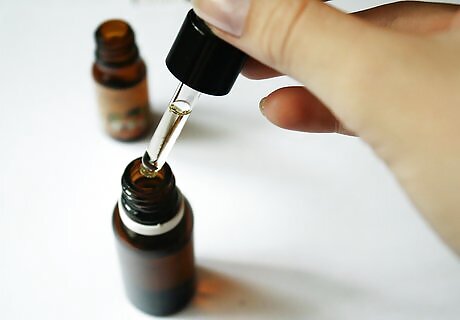
Use essential oils to thicken your hair. Chamomile, lavender, rosemary, thyme, geranium, cedarwood, almond oil, coconut oil, Indian gooseberry oil and many more, help thicken hair follicles. Apply 10 to 20 drops of your chosen oil to your scalp, and massage the oil in with your fingers. Use you fingers to rub the oil down to the tips of your hair. You could also mix 3 to 5 drops of essential oil into your shampoo or conditioner when washing your hair. Deep condition your hair by adding five to 10 drops of essential oil to 3 to 4 ounces of castor oil, olive oil, jojoba oil or sunflower oil. Apply the oil to your hair, taking care to cover each strand. Wrap your hair in a towel and let the oil sit for 30 minutes, then shampoo and condition as normal. Not just any oil will do. Research into hair thickening oils published in the Journal of Cosmetic Science shows some, like coconut oil, penetrate better than others.
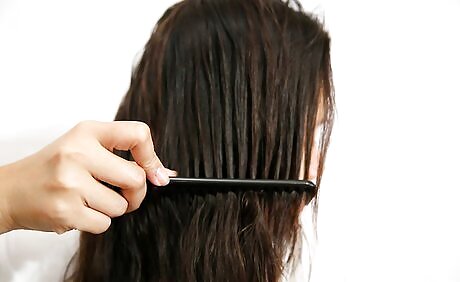
Treat your hair gently to decrease hair loss. Use a wide-toothed comb instead of a brush, and work out the tangles with care, rather than pulling them through. Be especially gentle when your hair is wet. Don't rub, squeeze, or wring it out as these actions can cause some hairs to break. Simply wrap your hair in a towel and let the towel absorb moisture. Avoid ponytails and other hair styles like weaves and braids that pull and stretch the strands of your hair, these can cause breakage or worse, Traction Alopecia.
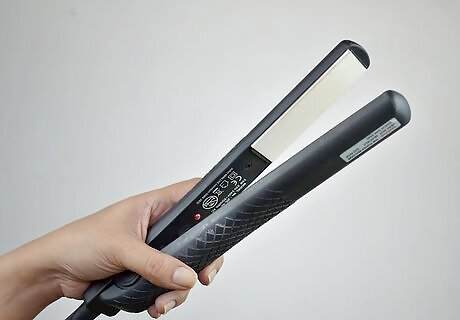
Avoid heat styling tools. Use blow dryers, straight irons, and curling irons sparingly. Overusing heated hair appliances causes your hair to become dry and brittle, making it fall out much more easily.

Allow your hair to grow in its natural texture and color. Avoid dyes, highlights and chemical treatments. Any type of chemical applied to your hair will damage it and dry it out. Even natural hair lightening techniques, like using lemon juice, can cause your hair to fray.
Try volumizing techniques for a fuller appearance. There are many volume-boosting products on the market. Go for the ones with natural ingredients. Wash your hair with a volumizing shampoo to add waves and volume to the crown of your head, making your hair appear fuller. Apply a volumizing conditioner to the strands and roots of your hair every time you shampoo. Avoid putting the conditioner on the top of your head near the roots of the hair, which can make the hair appear thinner by weighing it down. Try using root lifters and volumizing sprays when styling your hair to get the fullness you are looking for. Using volumizing products too often can dry out and damage your hair.
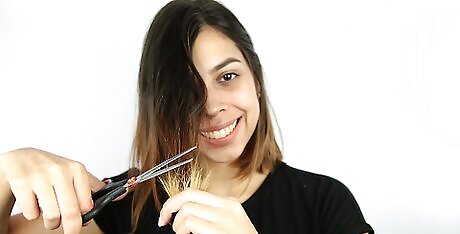
Get your hair cut. Cutting off dry, dead ends adds new life to hair, making it appear thicker. Short blunt cuts, such as bobs, make hair look fuller.
Making Lifestyle Changes
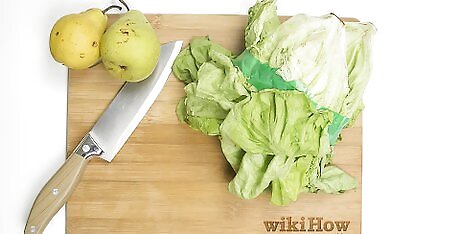
Eat a well-balanced, healthy diet with plenty of vitamin B and iron. Many people experience thinning hair because they have nutrient deficiencies. Vitamin B plays a large role in the health of your hair, and getting enough of it is essential to keeping thick hair and reducing how much you shed. Good sources of vitamin B include fruits, vegetables, nuts, and brown rice, among others. Diets deficient in iron lead to poor hair growth. Good sources of iron include beef, pork, lamb, poultry, fish, green leafy vegetables and iron-enriched grain products. Take prenatal vitamin supplements. Prenatal vitamins contain the right mix of vitamins for healthy hair, and as a bonus, healthy nails and skin.
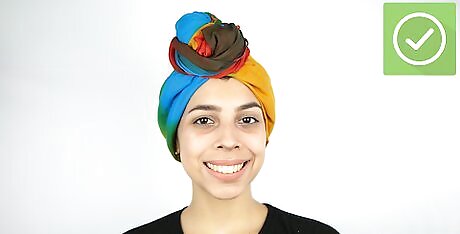
Protect your hair from chemicals and pollutants. It's difficult to avoid exposure to everyday environmental toxins, but there are a few preventative methods you can try: Wrap your hair in a scarf or hat when you walk or bike through heavy traffic. Pollution caused by cars can dull and flatten your hair, making it appear limp and unhealthy. Wear a swim cap in chlorinated pools. Have you ever had a stylist ask you if you're a swimmer? Chlorine stays in hair and makes it visibly dry and damaged. Protect your hair in the pool, or be sure to wash it with a good shampoo before the chlorine dries.
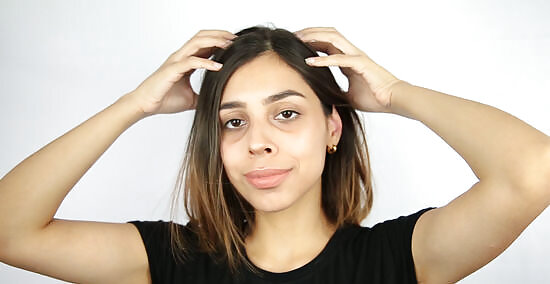
Massage your scalp regularly using your fingertips. Massage by moving your fingers in little circles. Massaging increases circulation to your scalp, helping it grow healthy hair.

Examine your stress level. Stressful situations often lead to hair loss. If you have a source of stress you can remove from your life, consider doing so. Some sources of stress are unavoidable, but they usually go away after awhile. If your hair is falling out due to a stressful situation, it will probably grow back with the situation is resolved. Thinning hair itself can be a source of stress. Calm your mind by doing everything you can to help your hair be healthy, like using natural products, making healthy lifestyle choices, and getting all your vitamins.
Pursuing Treatment Options for Thicker Hair
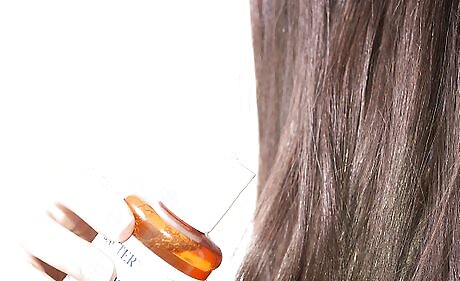
Try an over-the-counter hair growth product. There are products made for both men and women that are found to be effective by many people. Some of the products are hair growth-stimulating shampoos, and others have a more complicated application process that requires you to sit with the product on your head and allow it to work. Do some research to figure out which is right for your needs. Test the product on one discreet part of your head before applying it to your entire scalp, since you may have an allergy.

Get hair extensions. Extensions are attached to your existing strands of hair in such a way that they blend in with your natural texture and color. They can be as long or short as you want. Extensions can be expensive, so conduct some research before you choose what type to get. Visit a stylist to ask for information about extensions and have them placed in your hair.

Instant hair thickeners are becoming widely available. Coloured sprays and creams can be used to colour the scalp and give the appearance of thicker hair. Another option is Nanogen, tiny keratin fibres which bind to your hair making it thicker, but wash off easily. These are a more flexible solution that transplants.

Consider hair transplants. Commonly called hair plugs, hair transplants are surgically inserted in spots where hair is balding or thinning. This method is usually pursued by men, but women with thinning hair may also get hair transplants. Hair transplants are done in a doctor's office. Consult your doctor or ask for a referral to get further information about whether you are a good candidate for this procedure.



















Comments
0 comment